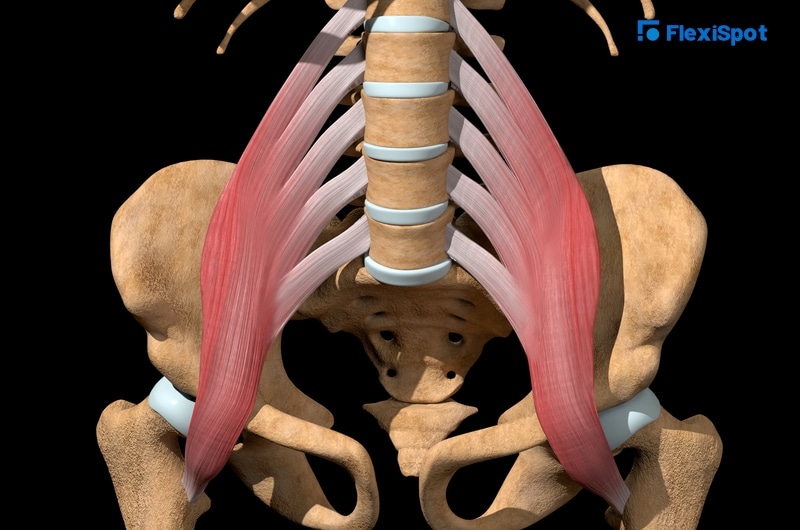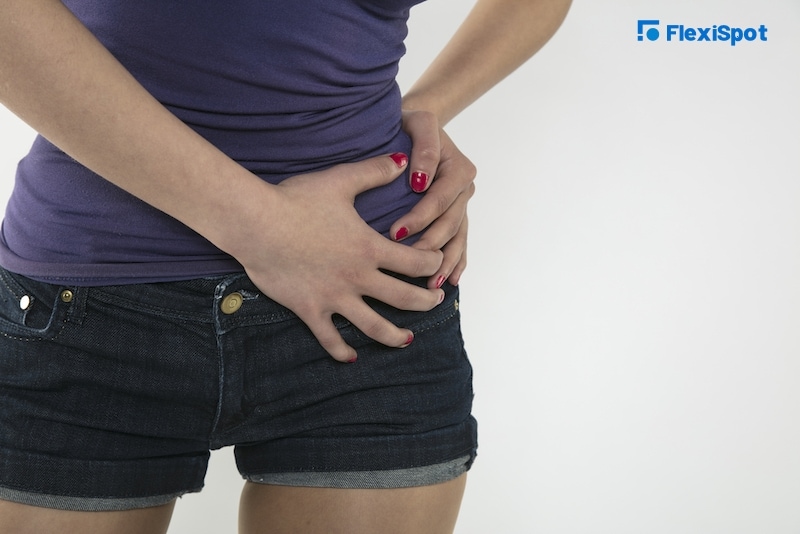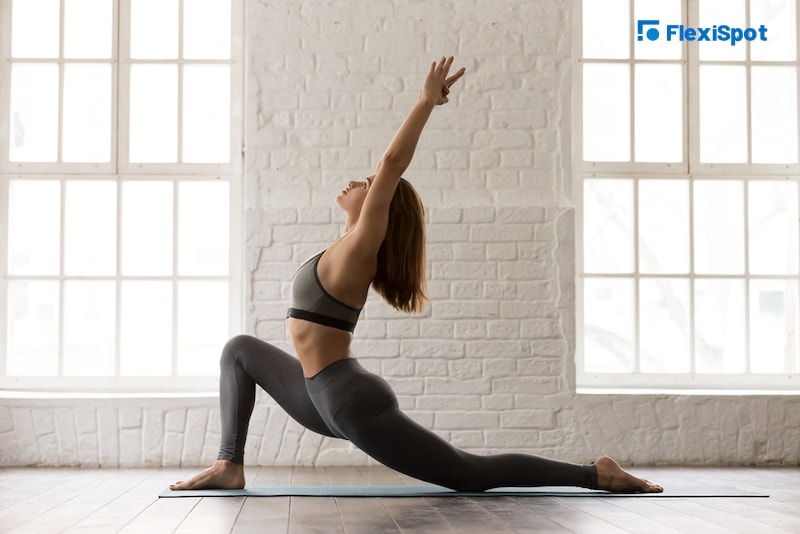Ah, office life. We keep hearing that sitting is bad for us, yet in most cases the grind has to continue. This is where having a variety of practical tools to get you through your day can be helpful, such as a standing desk, frequent breaks and healthy habits outside of the office (think exercise). What may be less obvious about the detriments of prolonged sitting is hip flexor strain.
What are our hip flexors anyways?
Our hip flexors are basically all the major muscle groups in the front of the hip that help us flex, or bend, our hips (the movement of bringing the thigh toward the chest). The main muscles groups are the psoas major, psoas minor, tensor fascia latae (also commonly known TFL) and quadriceps (for a full visual look here). These large muscles are key for powerful leg movements and strength with everyday activities like walking, squatting, and lunging. These muscles are intricately attached to the lower spine, the pelvis, the hips and even the rib cage. Thus, if they get out of balance, stiff or there is any hip flexor strain it is easy to imagine that it can cause mayhem throughout the body.
How sitting affects them.
Our bodies tend to adapt to the positions that we put them in the most. Since the average American spends over 12 hours in a sitting position, this puts the hip flexors in a position that is not ideal ALL day. When sitting, these muscles are in what is considered a "shortened position" for the muscles. Basically, this means the muscles are all bunched up into each other for most of the day if we're sitting. With all those sitting hours logged, they will start to adapt to the position. This will leave you feeling stiff and sore when you go to stand up. Even if it isn't obvious that one of the reasons for your stiffness after sitting is your hips, these big muscles are certainly playing a big role. A stiff muscle can easily lead to a strained muscle, which is defined as an intense stretch or tear to a muscle either from an overstretch or a strong contraction. A strain due to overstretch will be more common for serial sitters since the hips will be stiff and resistant to stretch.
What a tight hip flexor does to the body.
Sit enough and tightness will become the norm for these muscle groups, which could end up in a hip flexor strain. When these muscles are strained it can easily affect the whole body due to their role in core control and balance. It can start affecting your basic activities of daily living including walking, getting up and down from chairs, in and out of the car, your exercise routine (hopefully you have one), and even the way you sleep. When these muscles are strained the two biggest complaints tend to be muscle cramping in the hip flexor muscles themselves and low back pain (due to compensatory movements).
What a hip flexor strain feels like.
Whether the hip flexors are strained or just stiff, they have the tendency to hold your entire pelvis in a forward position. This causes the back to arch and the entire pelvis to "tip" forward. Once this has happened you may feel stuck in this position no matter what activity you are doing: standing, sitting or otherwise! Once this position is the "norm" for these muscles it may feel like you get a charlie horse in the front of your hips even with simple movements because of the position you are "stuck" in. Any movements that specifically involve hip flexion (like a crunch, leg lifts, etc.) may be painful and feel cramped up because of this.
So what do we do about it?
The short answer is sit less, of course! However, outside of that there are plenty of simple options that you can implement right now.
- Variety is the spice of life. Periodically get out of the sitting position. Try a standing desk for optimal benefits at work.
- Take a few short breaks throughout your work day (and when at home too) to stretch the hip flexors. This can be as simple as standing and walking around. You can try a specific hip flexor stretch too, such as a runner's stretch.
- Make sure you have a good exercise routine to promote tissue extensibility throughout the body to prevent strain in the hips and throughout the body. A big bonus is specifically focusing on core strength.
- Have good body awareness. Being able to use your core muscles correctly with standing and walking movements will help stretch out your hip flexors when you're not sitting (see the core link above). Otherwise, you may be ironically reinforcing further hip flexor tightness and strain.
No matter how you choose to tackle this issue, it's all about balance. Be nice to your body and hip flexors by focusing on your health and keeping moving as much as possible.


